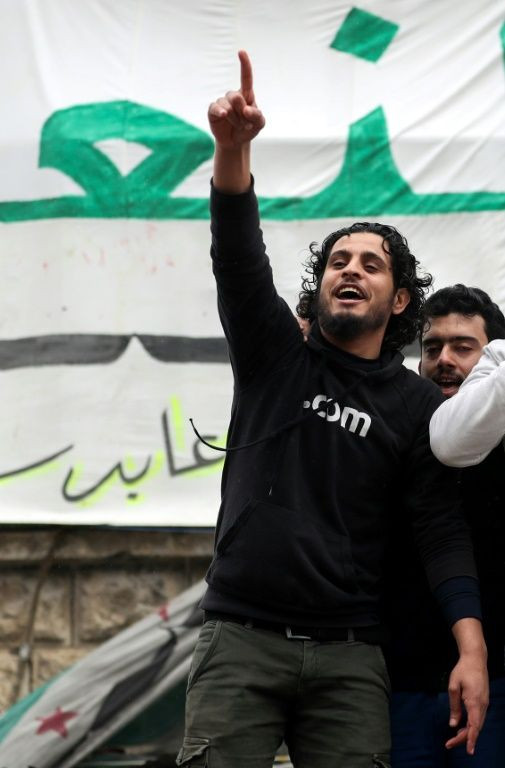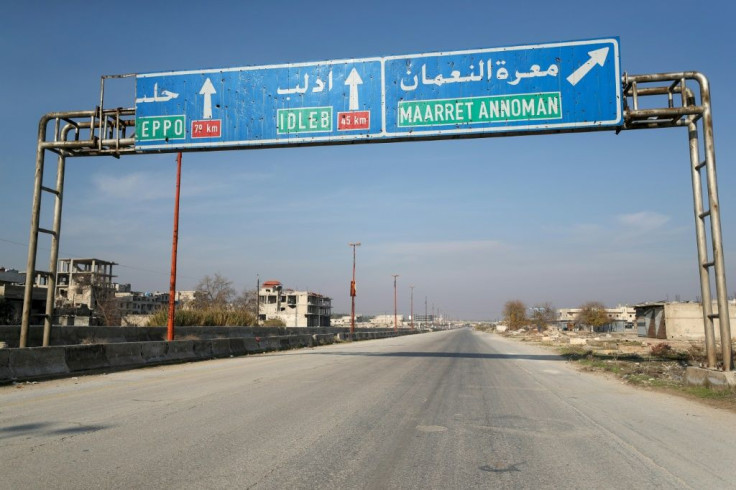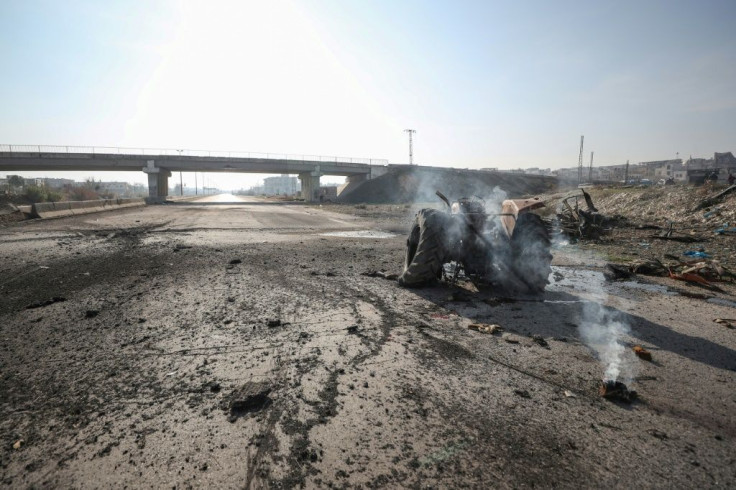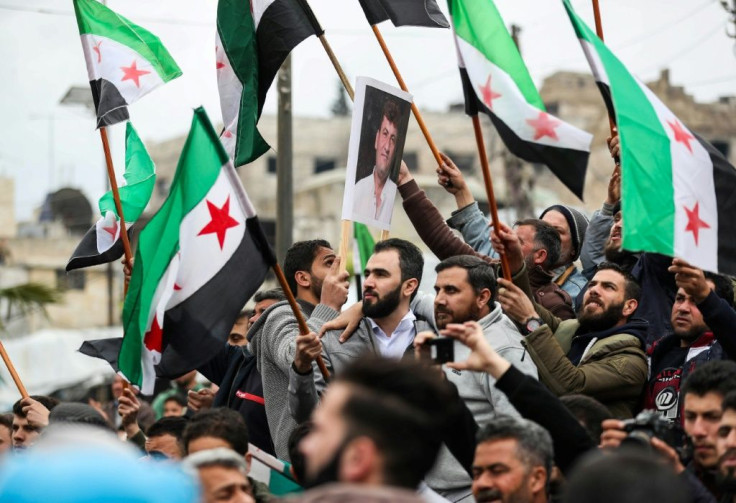Syria's Maaret Al-Numan: From Protest Hub To Ghost Town

For years, Syria's Maaret al-Numan was a defiant hotspot for anti-government protests, before increased regime bombardment reduced it to a graffiti-daubed ghost town.
Here is a brief profile of the strategic northwestern road hub, which the Syrian army said it had recaptured on Wednesday after more than seven years of rebel rule.
The second largest town in Idlib province, in 2011 Maaret al-Numan was one of the first centres in the region to rise up against the government of President Bashar al-Assad.

It became a hub for demonstrations, attracting the disenfranchised from villages all around.
It was "the town of the revolution", said media activist Ezzeddeen al-Idlibi.
"Residents from most surrounding villages would flock there to demonstrate."

Rebels overran the town in 2012, attracting deadly government air strikes, but the revolutionary fervour lived on.
On Fridays after noon prayers, demonstrators took to the streets waving the three-star flag of the uprising, chanting against the government and its Russian ally.
Their slogans later turned against increasingly powerful jihadists.

In March last year, after Syria's former Al-Qaeda affiliate cemented its influence over the wider opposition bastion, demonstrators flocked together to mark eight years since the start of the anti-Assad uprising.
"Maaret al-Numan lived through nine years of revolution in all senses of the word," said former resident Bilal Makhzoum.

"To me it was water and air. I don't know how I will carry on without it."

Maaret al-Numan is the latest town to fall as government forces chip away at the country's last major opposition bastion.
Weeks of deadly bombardment had forced most of its 150,000 inhabitants to flee.
The town's recapture brings the regime a step closer taking full control of the wider jihadist-run stronghold and a key commercial artery running through it.

Maaret al-Numan lies on the M5 highway linking the capital to Syria's second city and former industrial heart Aleppo.
The recapture of the town is the latest symbolic blow to Syrian rebels in the agricultural region, where previous defiance has now been reduced to lingering graffiti.
"The olive trees will not rest until the jasmine is freed," reads one message in the town.
"The revolution continues," claims another, its author likely long gone.
But nestled in a UNESCO-listed region of ancient villages, Maaret al-Numan is also notable for its historic sites -- chief among them a mosaics museum.
Among the museum's most prized works is a depiction of the birth and life of Hercules, said former Syrian antiquities director Maamoun Abdul Karim.
In 2012, rebels posed inside for an AFP photographer, in front of a wall of tiny coloured cubes depicting a hunting scene.
As conflict escalated, volunteers did their best to preserve the Roman and Byzantine-era mosaics from air strikes and shelling, including by heaping sandbags against them.
Former employees "also played a great role in protecting the museum from looting," Abdul Karim told AFP.
In 2015, the museum, housed in an Ottoman-era caravanserai, was seriously damaged in a government barrel bomb attack, according to the Association for the Protection of Syrian Archaeology.
A government rocket strike also hit the buildings the following year, another non-governmental organisation said.
Maaret al-Numan is also the birthplace of Abbasid-era poet Abu al-Alaa al-Maari.
In 2013, unidentified perpetrators cut off the head of a statue honouring him in the town.
Activists blamed Al-Qaeda's then Syria affiliate, and distributed a photograph of the ruined sculpture, also riddled with bullets.
Born in 973, Maari lost his eyesight at a young age but rose to become one of the greatest Arab poets, known for his criticism of Islam and other religions.
In one of his best known works, he wrote: "There are two kinds of people in the world. Those who have a mind and no religion, and those who have religion but no mind."
© Copyright AFP 2024. All rights reserved.




















